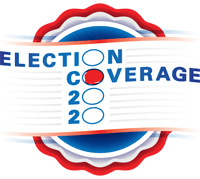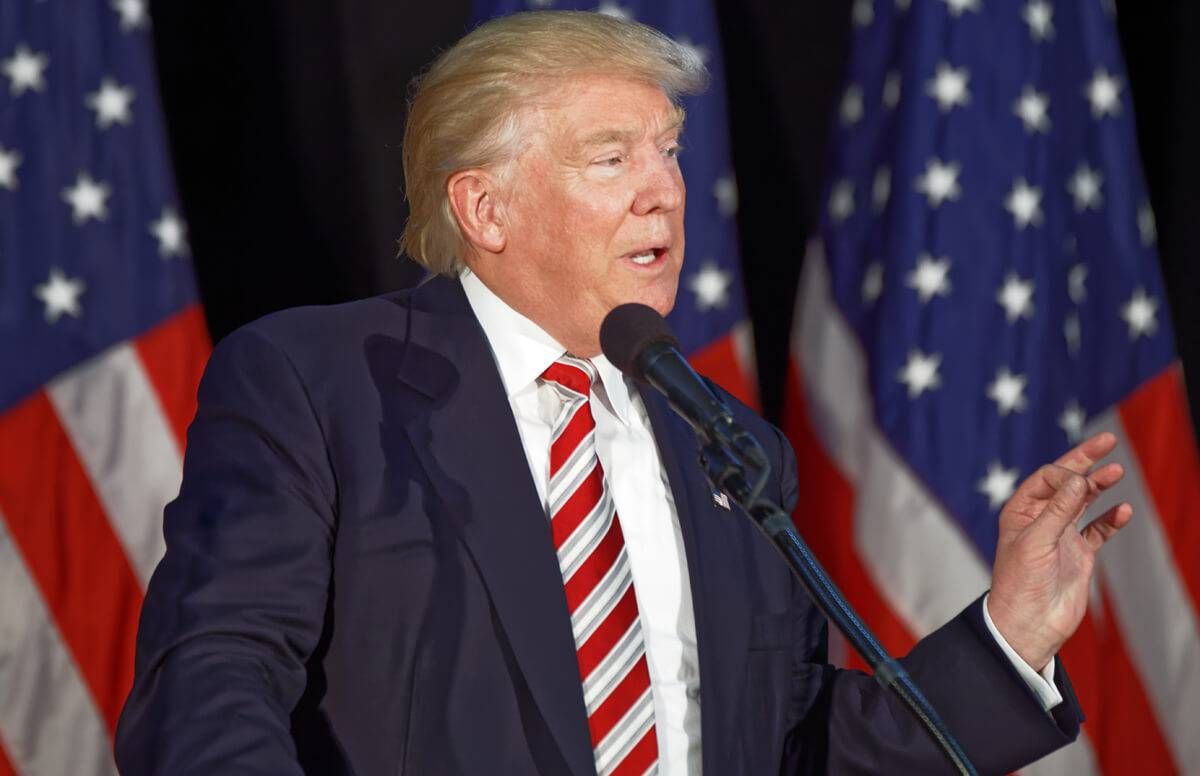2020 Election: Trump's Second-Term Proposals for People 50+
There's no Republican platform, but here's what looks likely

(We know that the 2020 election is vitally important to our readers and we’ve been continually publishing articles about the policy proposals from Democratic presidential hopefuls and President Trump. We recently published a close look at ideas in Joe Biden’s Democratic platform that could keenly affect Americans 50 and older. Here’s an analysis of ones for a Donald Trump second term.— The editors)

To analyze President Trump’s re-election policy proposals for Americans 50+, I’d planned to do what I did for my Joe Biden post: scrutinize the party platform and talk to analysts about it. Problem is, there is no 2020 Republican platform, even though Trump told delegates to write a “short form” version.
Instead, there’s a six-page agenda document, called “Fighting for You!” with 50 bullet points representing a “set of core priorities,” but without details or legislative plans.
The “Fighting for You” announcement says that “over the coming weeks the President will be sharing additional details about his plans through policy-focused speeches on the campaign trail.”
In Trump's 50-point bullet list, only two points are directly targeted at Americans 50 and older.
In Trump's 50-point bullet list, only two points are directly targeted at Americans 50 and older: “Protect Social Security and Medicare” and “Protect Our Veterans and Provide World-Class Healthcare and Service.”
So. what might a Trump administration mean for people 50+?
The theme of his agenda document seems to be his oft-stated belief that a strong economy is the solution to most any problem. (One of its bullets: Create 1 Million New Small Businesses.)
But to delve more deeply, here is an analysis based on Trump’s previous statements and actions as well as policy analysts’ insights:
Social Security
Perhaps no issue illuminates the problem of truly knowing what Trump intends for a second term than his recent comments on Social Security.
They’re a good example of why Carlton College political scientist Steven Schier says that, when studying President Trump, it’s essential to distinguish between “what he says and what he does. You have to tune in every day for a clue.”
When he ran for president in 2016, Trump stood out among his Republican rivals by promising that he would “do everything within my power not to touch Social Security.” The Social Security Trust Fund is currently estimated to be depleted by 2035, though some experts think the current recession may hasten that date.
More recently, the president signed an executive order temporarily suspending the Social Security and Medicare payroll taxes through Dec. 31 for employees earning $100,000 and less to boost their incomes during the pandemic and help combat the recession. Those taxes fund the Social Security and Medicare programs. Trump plans to restore the lost payroll taxes with money from the government’s general revenue fund.
After issuing his executive order, Trump said that if reelected, he would permanently “terminate the tax.” Two days later, he repeated that and added: “The payroll tax is a big deal for people, it’s a tremendous savings for people and we’re going to do it, and we intend to terminate it at the appropriate period of time.”
But what Trump means isn’t clear. He could be saying he wants to make the 17-week temporary cuts permanent. More worrisome, perhaps he really wants to terminate payroll taxes altogether, tapping into general revenues as a substitute source of funding. That idea has been a goal of many conservatives for years.
Treasury Secretary Stephen Mnuchin, who is the head Social Security Trustee, told Fox News that in a second Trump term, the administration planned to pay for entitlements like Social Security and Medicare by moving money “from the general fund to those trust funds.”
But Stephen Goss, chief actuary of the Social Security Administration since 2001, has written that if Social Security’s payroll-tax funding was terminated, the results would be essentially catastrophic for current retirees and Americans who’ll eventually file for Social Security benefits.
He wrote: “If this hypothetical legislation were enacted, with no alternative source of revenue to replace the elimination of payroll taxes on earned income paid on January 1, 2021 and thereafter, we estimate that… [the Social Security trust fund for retirement benefits] would become permanently depleted by the middle of calendar year 2023, with no ability to pay OASI [Old-Age and Survivors Insurance] benefits thereafter.”
Trump’s advisers have said that he has no intention of eliminating payroll taxes.
Nevertheless, it appears that the president has shifted his position on Social Security toward Republican orthodoxy on the need to cut so-called entitlement spending — Social Security, Medicare and Medicaid — to reduce the ballooning $984 billion budget deficit.
When asked in January by CNBC’s Joe Kernen whether entitlement would ever “be on your plate,” Trump said: “At some point they will be” because “we’ve never had [economic] growth like this.” That was before the recession.
Retirement Security and Working Longer
Neither retirement security nor working longer received much attention from Trump when running in 2016 and the same is true in 2020. None of the bullet points in his list of priorities nor his campaign website say anything about either.
That said, the Trump administration has steadfastly worked to eliminate the Labor Department requirement that brokers and financial advisers who manage retirement accounts like 401(k)s must follow what’s known as the fiduciary standard — requiring the adviser to put the client’s interest first. The Securities & Exchange Commission has instead devised the broker-friendly “Best Interest” standard.
The Affordable Care Act isn’t mentioned in Trump’s 50 bullet point plan, although he says he will “Cover All Pre-existing Conditions.”
The Trump administration has also been hostile toward Obama-era rule changes that made it easier for states to create retirement plans for workers without access to employer-sponsored plans. The administration managed to get rid of the regulatory easing; its moves didn’t stop the launch of these plans, but did slow their spread.
Caregiving, Caregivers and Long-Term Care
There’s nothing in Trump’s second-term agenda list on caregiving or long-term care either and the president hasn’t offered proposals about them. But a new U.S. Treasury report offers some clues.
The report, Long-Term Care Insurance: Recommendations for Improvement of Regulation Report of the Federal Interagency Task Force on Long-Term Care Insurance, came from a task force including representatives from the Department of Health and Human Services, the Centers for Medicare & Medicaid Services and the Department of Labor.
It aimed to propose ideas to make long-term care insurance policies more affordable and better since premiums are too high for many households. The report encouraged insurers to develop more policies combining long-term care insurance with life insurance and annuity products.
“Unfortunately, for the most part, the group was unwilling to commit to any meaningful changes to a badly broken system” wrote Howard Gleckman, senior fellow at the Urban Institute, a Washington D.C. based think tank. “It made only modest suggestions, and none will significantly enhance the ability of consumers to pay for the growing costs of the services and supports required by frail older adults and younger people with disabilities.”
Health Care
Trump has repeatedly said over the years that his health care reform proposal to replace President Obama’s Affordable Care Act is on its way, usually within two weeks. But nothing has been proposed since the administration failed at repealing the law.
Intriguingly, the Affordable Care Act isn’t mentioned in Trump’s 50 bullet point plan, although he says he will “Cover All Pre-existing Conditions.” How? Who knows?
Meantime, the administration and 18 Republican state attorneys general are asking the Supreme Court to declare the entire Affordable Care Act unconstitutional. Oral arguments are scheduled for November 10, a week after the election.
One centerpiece of Trump’s 2020 campaign is lowering pharmaceutical prices, which is one of the 50 bullet points. In July. Trump signed four executive orders geared at doing that. One tied Medicare prescription drug prices in the U.S. to prices paid in Europe and other developed nations. It takes effect August 24, unless Congress acts.
Trump highlighted his most-favored-nation order at a recent campaign speech in Mankato, Minn.
“So if Germany, or any place, anywhere in the world is getting their drugs for less, which they do, a tiny fraction of what we pay, they have to meet those prices,” he said. “But the favored nations clause could reduce drugs by fifty, sixty, seventy or even eighty percent. Think of that one. And I’m the only president in fifty-one years, that had a year, last year, where drug prices came down, but that was peanut stuff compared to what I’m talking about.”
Yet the executive order hasn’t been made public. It’s being held back to give the pharmaceutical industry time to negotiate with the White House.
Other bullet points vaguely call to “put patients and doctors back in charge of our healthcare system,” “lower healthcare insurance premiums,” “end surprise [medical] billing” and “protect our veterans and provide world-class healthcare and services.”
Health care for veterans is a focus of the Trump campaign website. It applauds a number of administration initiatives. including expanded telehealth options for retired military but doesn’t offer new proposals.
Taxes
The signature legislative accomplishment of the Trump presidency is the massive tax cut package signed into law toward the end of 2017. And for Term 2?
The key bullet point on taxes for individuals is the promise to cut taxes to boost take-home pay. (Most of the other tax cuts and incentives noted are designed to encourage companies to expand operations in the U.S.)
Trump’s bullet point agenda, surprisingly, doesn’t mention cutting capital gains taxes, something the president has floated numerous times during his tenure in office. Nor does it mention Trump’s earlier call to extend the estate and gift tax exemption beyond 2025, when it’s scheduled to expire.
Global Climate Change and Sustainability
The Trump administration has pulled out of the Paris Climate Accord and there is no rethinking of that decision. His campaign website’s discussion of “Energy and Environment” in its “Promises Kept” section encourages greater fossil fuel exploration and use.
His 50-point plan has two bullet points on the environment. First, continue to “lead the world” in access to the cleanest drinking water and cleanest air. Second, to partner with other nations to clean up the planet’s oceans.


